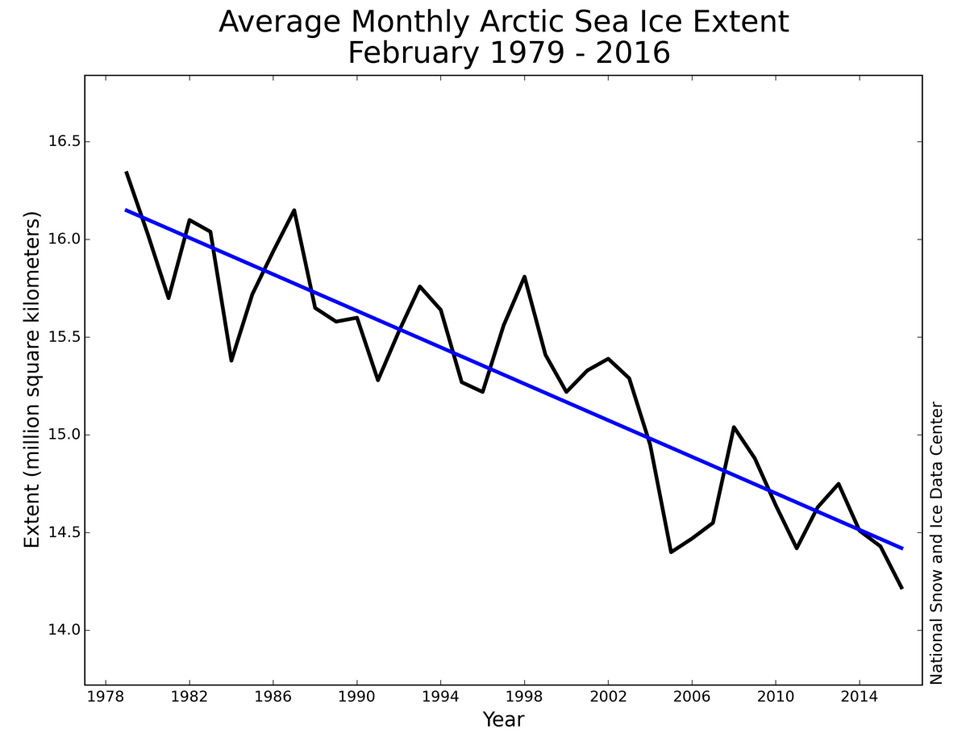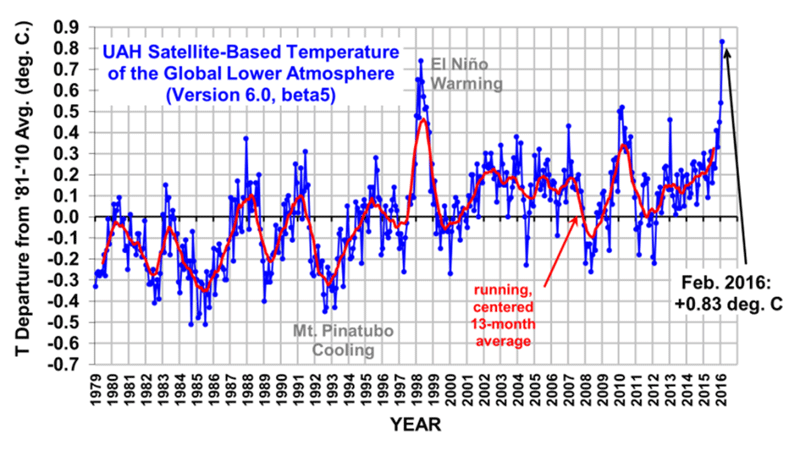
8th March 2016 Arctic sea ice hits record low Last month, Arctic sea ice reached its lowest extent on record for a February.
The latest available satellite data shows that last month, the Arctic sea ice extent averaged 14.22 million square kilometres (5.48 million sq miles), the lowest on record for a February. The National Snow and Ice Data Centre (NSIDC), which published the data, confirms it was the second month in a row that a satellite record low has been observed. Surface temperatures in the region averaged more than 4 degrees Celsius (7.2 degrees Fahrenheit) above the 1951 to 1980 average. Air temperatures at the 925 hPa level were even higher: between 6 to 8 degrees Celsius (11 to 14 degrees Fahrenheit) above the 1981 to 2010 average over the central Arctic Ocean near the pole. This follows 10 straight months of record-breaking high surface temperatures around the globe. The loss of thicker, older ice has become an especially alarming trend in the Arctic. More than half of the older ice has disappeared since 1987, which is partly responsible for the sharp decline in overall ice. Being more brittle, the younger ice tends to melt faster. As warming continues to increase, it could seriously affect the jet stream, while disappearing sea ice could trigger feedbacks as darker ocean water absorbs more heat than white, reflective ice.
Many gigatons of methane are trapped by permafrost and subsea clathrates, but the rapid melt is already causing outbursts in the region. Methane is a greenhouse gas with 72 times the heat-trapping potential of CO2 when measured over a 20-year period. The current spike in global temperatures is being driven by the ongoing El Niño. However, regardless of this phenomenon, the signature of man-made warming is clearly evident in the background. Natural causes alone simply cannot account for the extra heat within the climate system. In a worrying sign of things to come, an alarming new milestone was reached on Thursday 3rd March. For a brief few hours, the average temperature in the northern hemisphere hit 2°C above the pre-industrial average, considered by most nations to be the "dangerous" limit for climate change. In terms of 12-month global averages, we are not expected to witness such an increase until the 2040s; but already half the world has experienced this temperature in 2016 – if only for a short time – which underscores just how rapidly our planet is changing. In related news, the UAH V6 Global Temperature record is now reported to have surpassed its previous high. For many years, climate change deniers have been using this dataset (which is based on indirect satellite inferences, as opposed to ground-level thermometers) to claim that global warming stopped in 1998. However, this dataset is now also showing a clear upward trend in global average temperatures, as illustrated in the graph below. From an environmental perspective, the U.S. presidential election this November will be of critical importance. All of the Republican candidates have vehemently denied the science of global warming and promised to undo the climate goals negotiated just last December in Paris, as well as threatening to curtail the Environmental Protection Agency (EPA). On the Democrat side, Clinton has been inconsistent and appeared to flip-flop on various issues. Only Bernie Sanders has presented a clear and unwavering message on solving climate change.
---
Comments »
|








